

Canberra Tourism & Travel
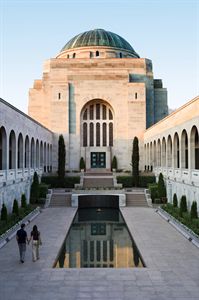
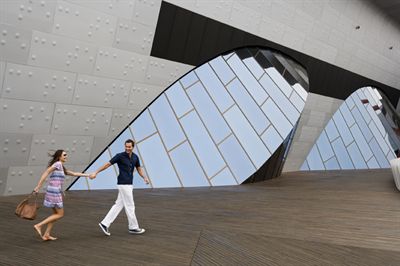
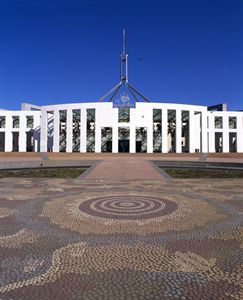
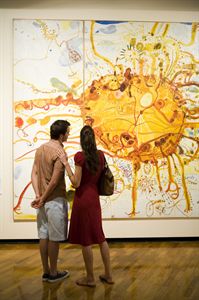
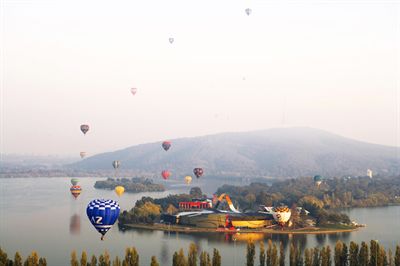
Canberra Australia
Canberra, the national capital city of Australia is situated in the Australian Capital Territory the ACT. Federation occurred by consensus in 1901. Both Melbourne and Sydney contended to become the Australian Capital City. The Yass-Canberra Valley, situated mid way between the two cities was selected in 1908 as the site for the Australian Capital Territory. The elegant city of Canberra stands today with its grand avenues, stately buildings, galleries, monuments, lakes and waterways and open parklands, reflecting as it was designed to do, the entire nation of Australia. Canberra is also host to the multitude of Embassies of Australias friends and neighbours from around the world.
Graceful hotels from a bygone era compliment modern apartments and hotels throughout the city and suburbs. Excellent shopping is available in the city and in the well-planned suburban centres. A short drive from Canberra, are some interesting and historic rural townships, set in some of Australias most fertile farming country.
Weekend markets offer fresh foods, and clothes by local designers, art, metal and glass working artisans jostle with produce from local wineries and antique dealers.
Canberra History
Canberra the capital was planned to become the meeting place of the elected political leaders from all of the newly federated six colonies, which had amalgamated, by free vote to become the Commonwealth of Australia.
Symbolically, the name Canberra was taken from the language of the Ngannawal people indigenous to the area. oKamberra means meeting place.
In 1912, an international competition was held to select an architect to plan the city. The designs of prominent American architect, Walter Burley Griffin, based on a series of geometrically precise circles and axis, were victorious.
In an interview with the New York Times that year, Burley Griffin said, oI have planned a city not like any other city in the world. I have planned it not in a way that I expected any government authorities in the world to accept. I have planned an ideal city a city which meets my ideals of the city of the future.
In the twenty first century, we can say Walter Burley Griffin excelled in his ambition.
Parliament House
Parliament House on Capital Hill overlooks Lake Burley Griffin and can be seen from nearly every part of the city. The new Parliament House boasts an excellent art gallery and facilities that feature Australian timbers and gracious interiors.
The original parliament house in Canberra was completed in 1927 at a cost of triple the initial estimate. For sixty one years it was the hub of the nation??s political life until it was replaced in 1988 by the new Parliament House now on Capital Hill.
The Embassies
Most of the Embassies in Canberra are located in Yarralumla to the west of Parliament House. Many have considerable charm and are well worth visiting like the Indonesian Embassy, which is built like a traditional Indonesian village house and has a pleasant garden out the front, and the Japanese Embassy characterised by its beautiful formal Japanese garden and traditional Japanese tea house. Some, like the huge Chinese Embassy and the United Kingdom, can be seen as you drive towards Parliament House but most require a map to find.
Australian War Memorial
Sitting in his office in the Parliament House on Capital Hill, as he considers the future for Australians, the Prime Minister of Australia looks along the sweeping length of Anzac Parade to the splendid Australian War Memorial.
In the Australian War Memorial, directly in his line of vision, is the responsibility endowed by the awe-inspiring Gallery of the Eternal Flame of Remembrance of the heroes who created the Anzac legend: The men and boys who in 1915 introduced the world to the offspring of the wild colonial boys and created the proud Commonwealth of Australia.
In considering commemoration of the valour and sacrifice of the Anzacs who went to the distant war in 1915 at Gallipoli, C.E.W. Bean thought of the idea of a national museum.
The idea was to set aside a place where families and friends who were unable to visit the faraway lands where their loved ones had fallen and were buried could visit and could grieve for their losses. The magnificent Australian War Memorial is a citadel to the glory of Australias love of freedom, fair play, mateship and outstanding courage in the face of horror.
Set high on the hill, overlooking the Canberra, the exquisite statuary, paintings, photos, diorama and continuously evolving displays at the National War Memorial laud the honour of Australia and celebrates the spirit of Australians who continue to pursue the ideals of the original Anzacs.




